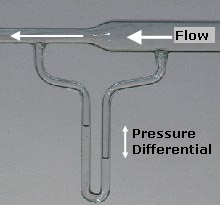I'm in the middle of relocating my pool pump, filter and SWG that have been out in the yard about 10 feet off the corner of the house, approximately 10-12 feet in order to be up against the end of the house, so that I can add a pool heater to the mix, and have the natural gas more readily available, as well as have everything out of sight.
The entire pool was plumbed with 1.5" PVC, so that is what I've kept at the pump and filter over the years, even as I went through different filters and pumps. There are two supply lines - one from a skimmer and one from a main drain - that come in to a 3 way valve, then that goes to the pump. The Variflow multiport valve on the side of the Hayward DE filter has 1.5" threaded fittings, currently with 1.5" PVC glued into male threaded adapters. There is a SINGLE 1.5" return back to the pool, to supply two return jets - one at the deep end and one at the shallow end. From my digging, it appears that the 1.5" return line splits under the concrete pool deck somewhere, likely at the deep end return, then runs around the end and side of the pool to the shallow end return.
The new pool heater - a Hayward 250k BTU unit -has fittings for 2" or 2.5" pipe, depending on whether you use the outside or inside of the fittings. But I am plumbed to 1.5".
I realize I could buy replacement union/fittings for my pump, about $80, and switch the pump over to 2" pipe. I could replace the 3 way, and have the two incoming 1.5" lines go out in a single 2" from the 3 way to the pump. BUT there are still a 1.5" retriction at the DE filter's multiport valve. And even if I use 1.5" male thread to 2" PVC adapters, and were to replace the slip nuts on my SWG cell housing, eventually that return line will be a restriction, even if I bury the 2" to 1.5" transition 10-15 feet away.
So my question is - is there any point in trying to change any of the plumbing to 2" while I am moving things and putting the heater in? Or should I just put a 1.5" to 2" PVC adapter before and after the heater?
A second question I just thought of - how hot is the water coming out of a pool heater? I know PVC is only rate to 140F, but surely pool heater output is much lower, as I sure don't think you want folks getting scalded at the return jets?
Thanks!
The entire pool was plumbed with 1.5" PVC, so that is what I've kept at the pump and filter over the years, even as I went through different filters and pumps. There are two supply lines - one from a skimmer and one from a main drain - that come in to a 3 way valve, then that goes to the pump. The Variflow multiport valve on the side of the Hayward DE filter has 1.5" threaded fittings, currently with 1.5" PVC glued into male threaded adapters. There is a SINGLE 1.5" return back to the pool, to supply two return jets - one at the deep end and one at the shallow end. From my digging, it appears that the 1.5" return line splits under the concrete pool deck somewhere, likely at the deep end return, then runs around the end and side of the pool to the shallow end return.
The new pool heater - a Hayward 250k BTU unit -has fittings for 2" or 2.5" pipe, depending on whether you use the outside or inside of the fittings. But I am plumbed to 1.5".
I realize I could buy replacement union/fittings for my pump, about $80, and switch the pump over to 2" pipe. I could replace the 3 way, and have the two incoming 1.5" lines go out in a single 2" from the 3 way to the pump. BUT there are still a 1.5" retriction at the DE filter's multiport valve. And even if I use 1.5" male thread to 2" PVC adapters, and were to replace the slip nuts on my SWG cell housing, eventually that return line will be a restriction, even if I bury the 2" to 1.5" transition 10-15 feet away.
So my question is - is there any point in trying to change any of the plumbing to 2" while I am moving things and putting the heater in? Or should I just put a 1.5" to 2" PVC adapter before and after the heater?
A second question I just thought of - how hot is the water coming out of a pool heater? I know PVC is only rate to 140F, but surely pool heater output is much lower, as I sure don't think you want folks getting scalded at the return jets?
Thanks!
Last edited:


